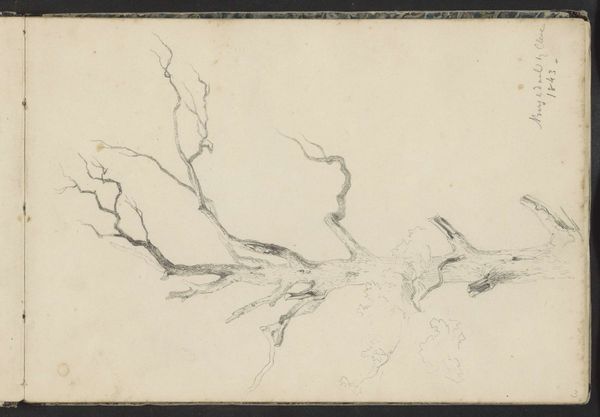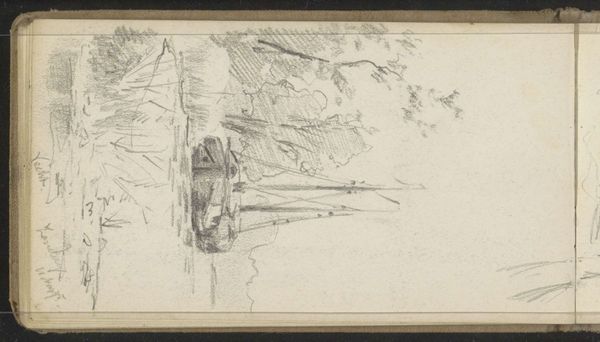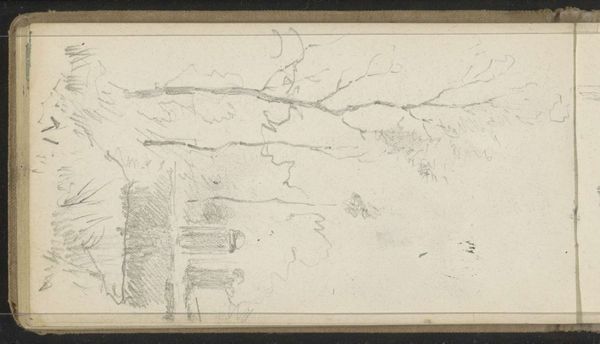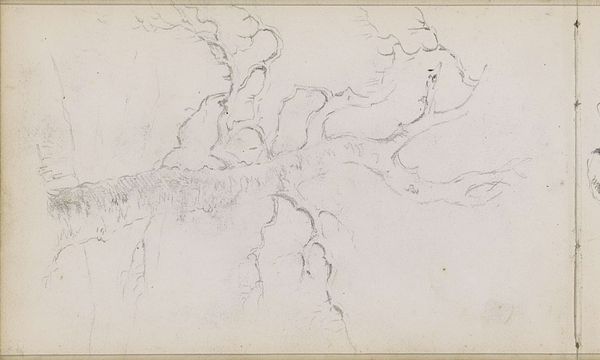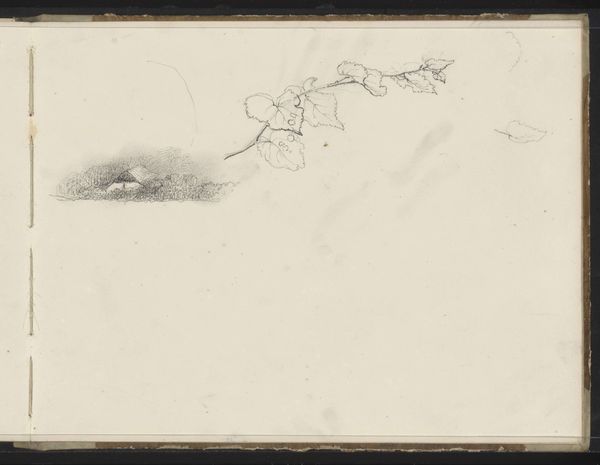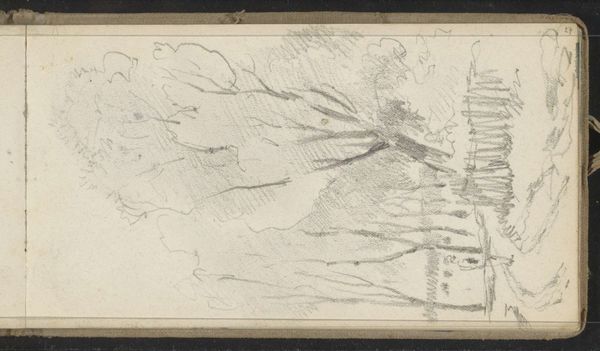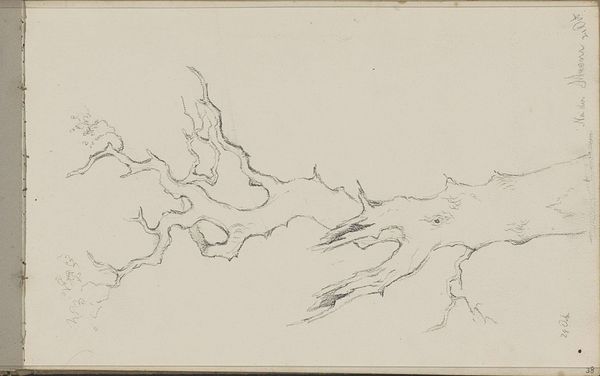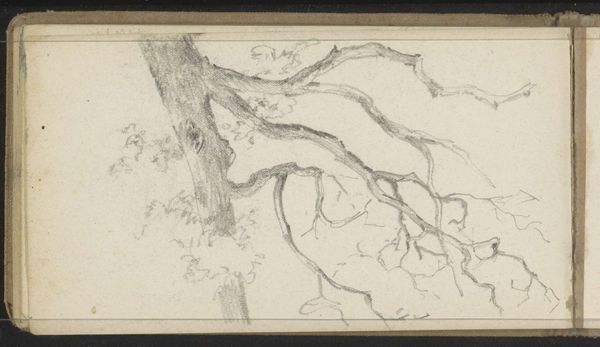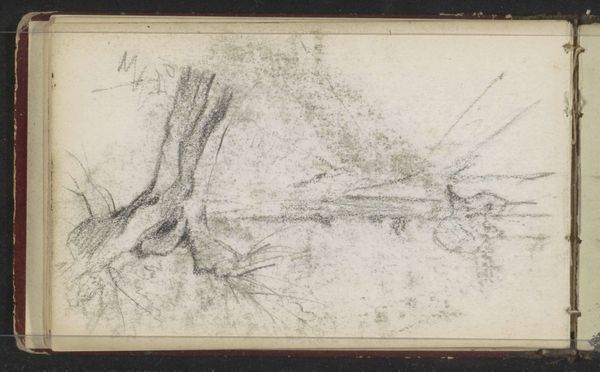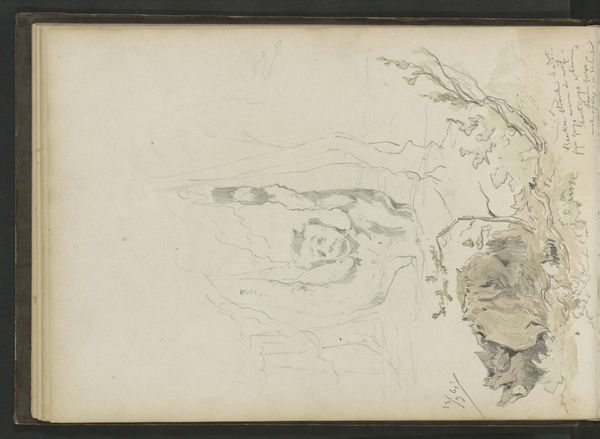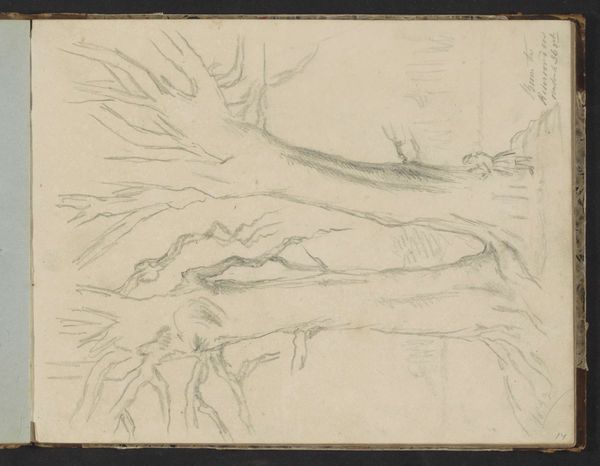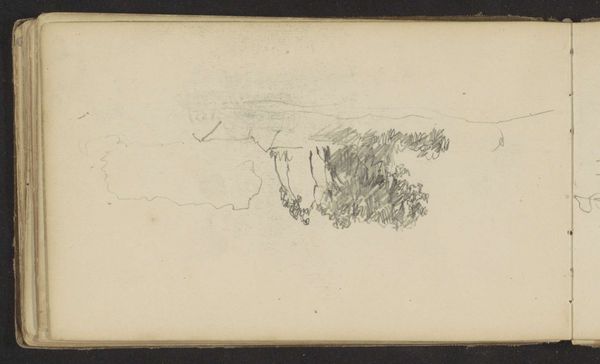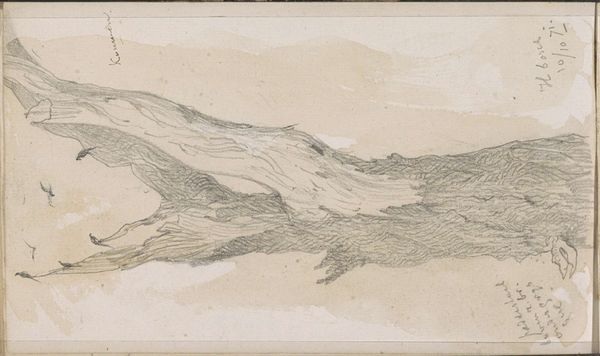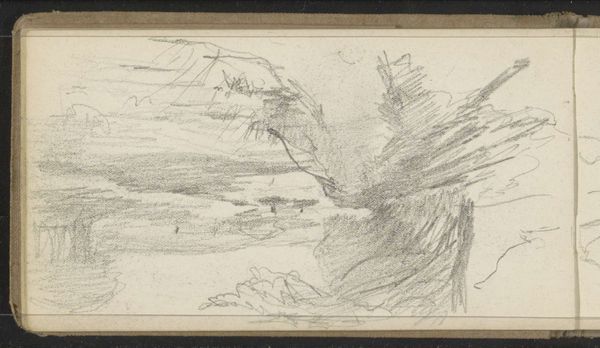
drawing, pencil
#
drawing
#
pencil sketch
#
landscape
#
form
#
pencil
#
line
#
realism
Dimensions: height 104 mm, width 179 mm
Copyright: Rijks Museum: Open Domain
Editor: We're looking at "Steiger aan een waterkant," or "Pier on a Waterfront," a pencil drawing from 1895 by Willem Cornelis Rip. It’s mostly wispy lines and shading. There is a hazy, quiet mood here. What jumps out to you when you look at this? Art Historian: You know, it whispers to me of fleeting moments, like catching a glimpse of something profound from the corner of your eye. The lines are so delicate. The artist isn’t trying to shout. It's more like a secret shared between the pier, the water, and us. Rip's almost whispering "Remember this." Editor: It almost feels like it isn’t finished, but on purpose. Why do you think that is? Art Historian: Maybe he found beauty in the incomplete. The hint of the pier, the suggestion of branches, lets our imagination fill the gaps, doesn't it? It becomes our pier, our waterfront, touched by our own memories of quiet places. What kind of waterfront do you think of when you look at this piece? Editor: It reminds me of my grandfather’s cabin, so really still, except for the bugs. It seems so different from a big seascape. It’s simple but really peaceful to consider. Art Historian: Exactly! Art doesn’t have to roar to resonate. Sometimes, it’s the quiet sketches, the fleeting impressions, that linger longest in our minds. And thinking about that is beautiful. It makes art so human.
Comments
No comments
Be the first to comment and join the conversation on the ultimate creative platform.
